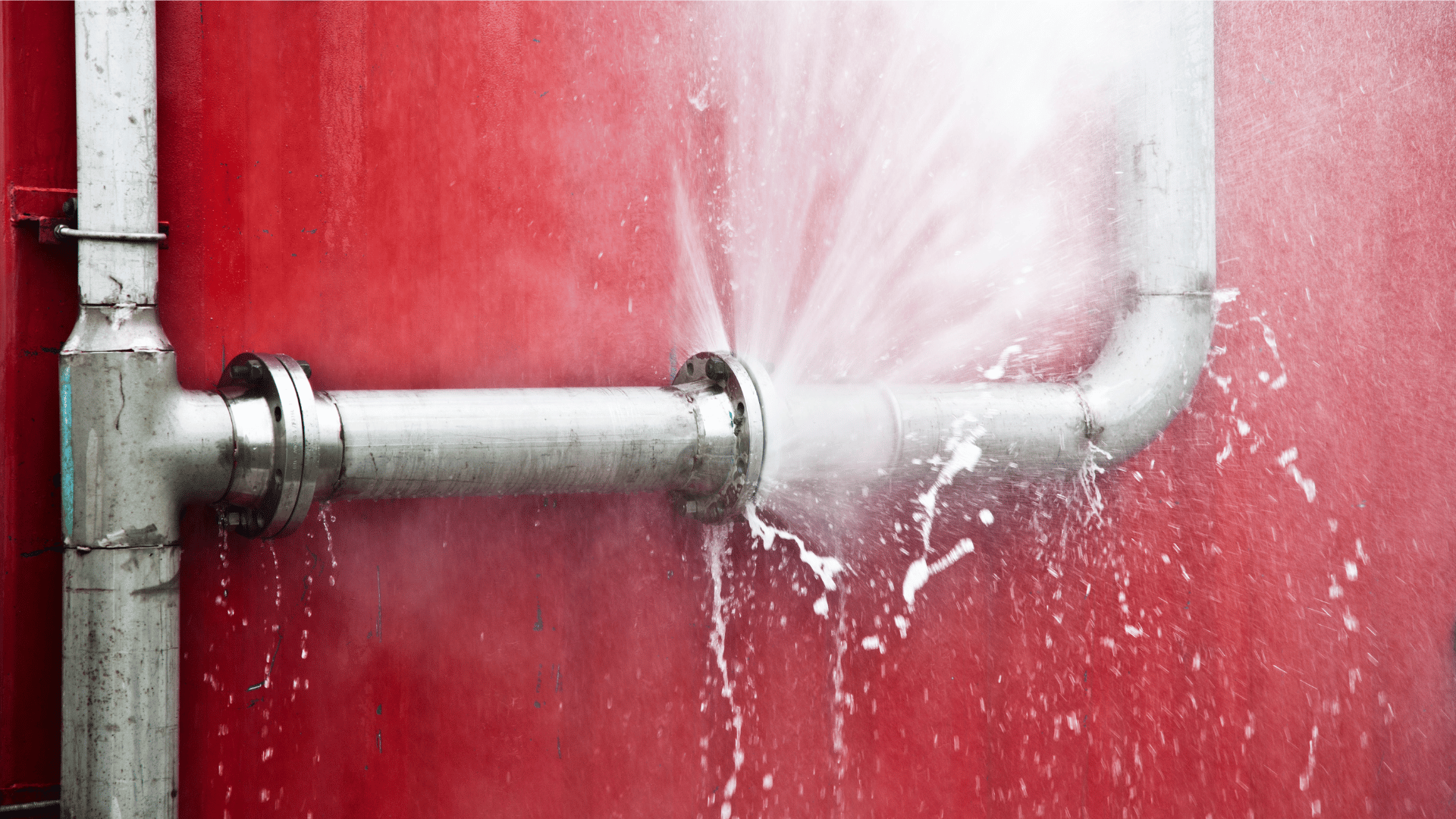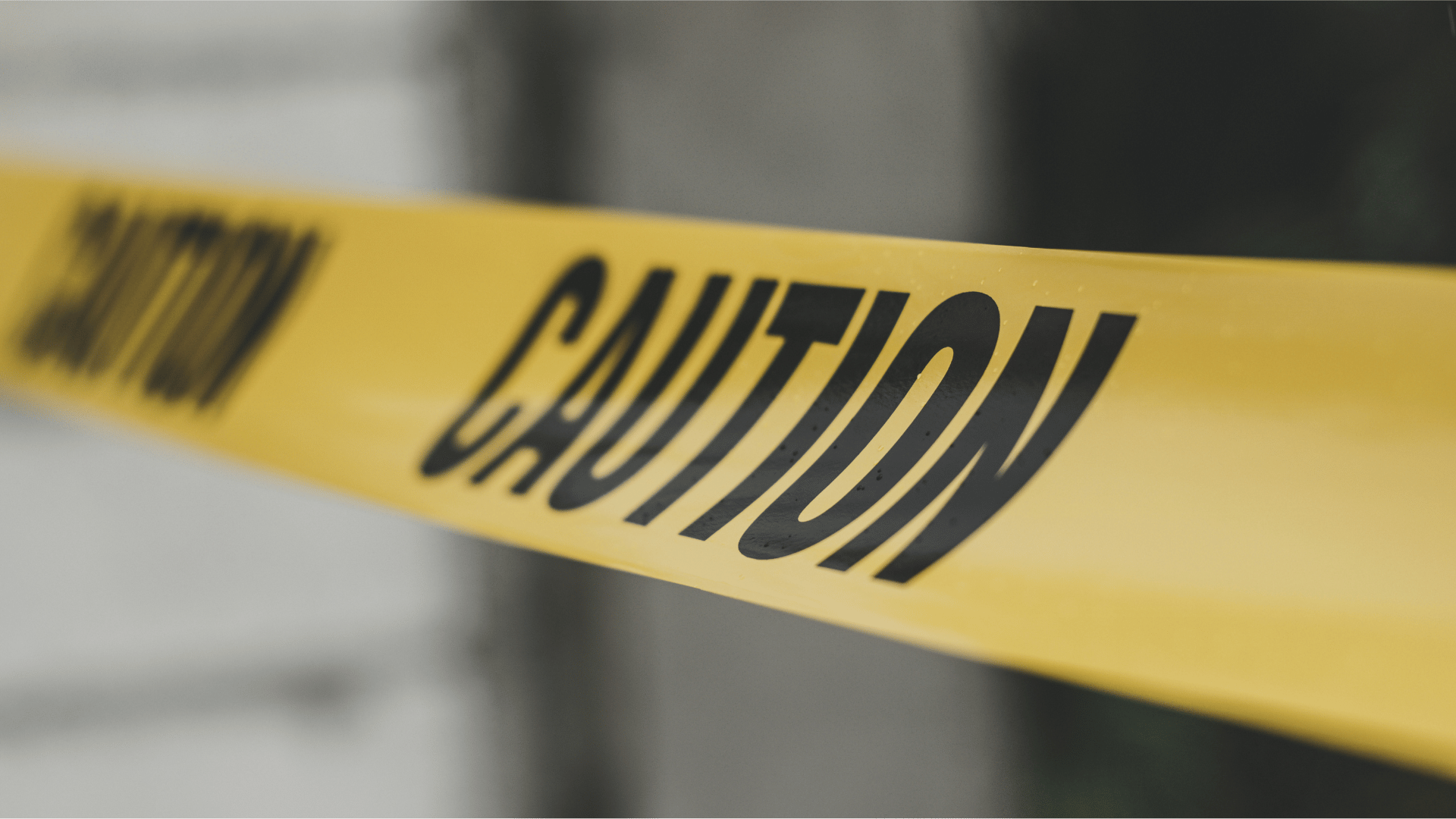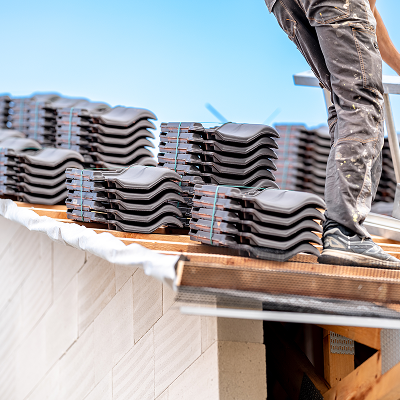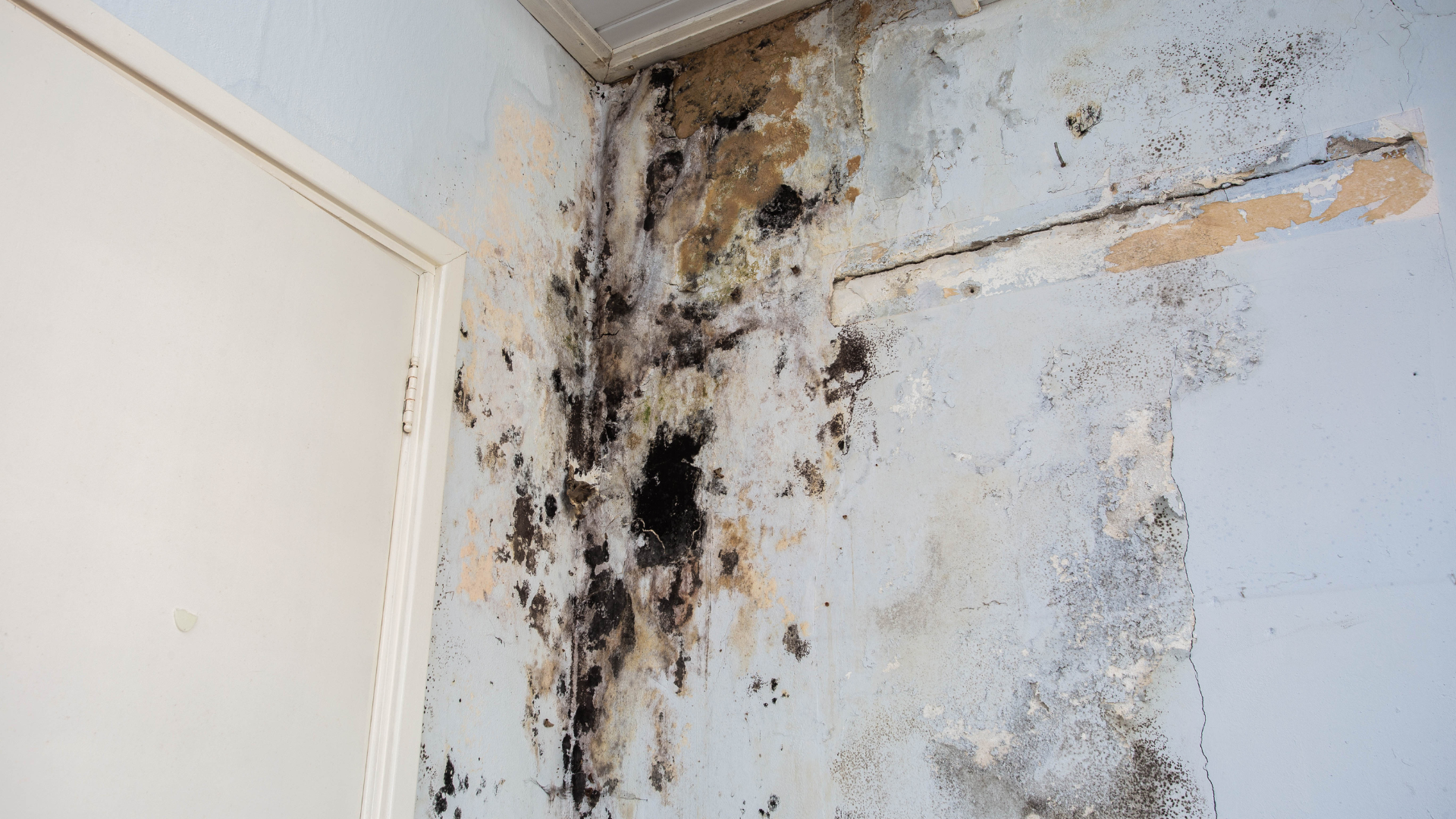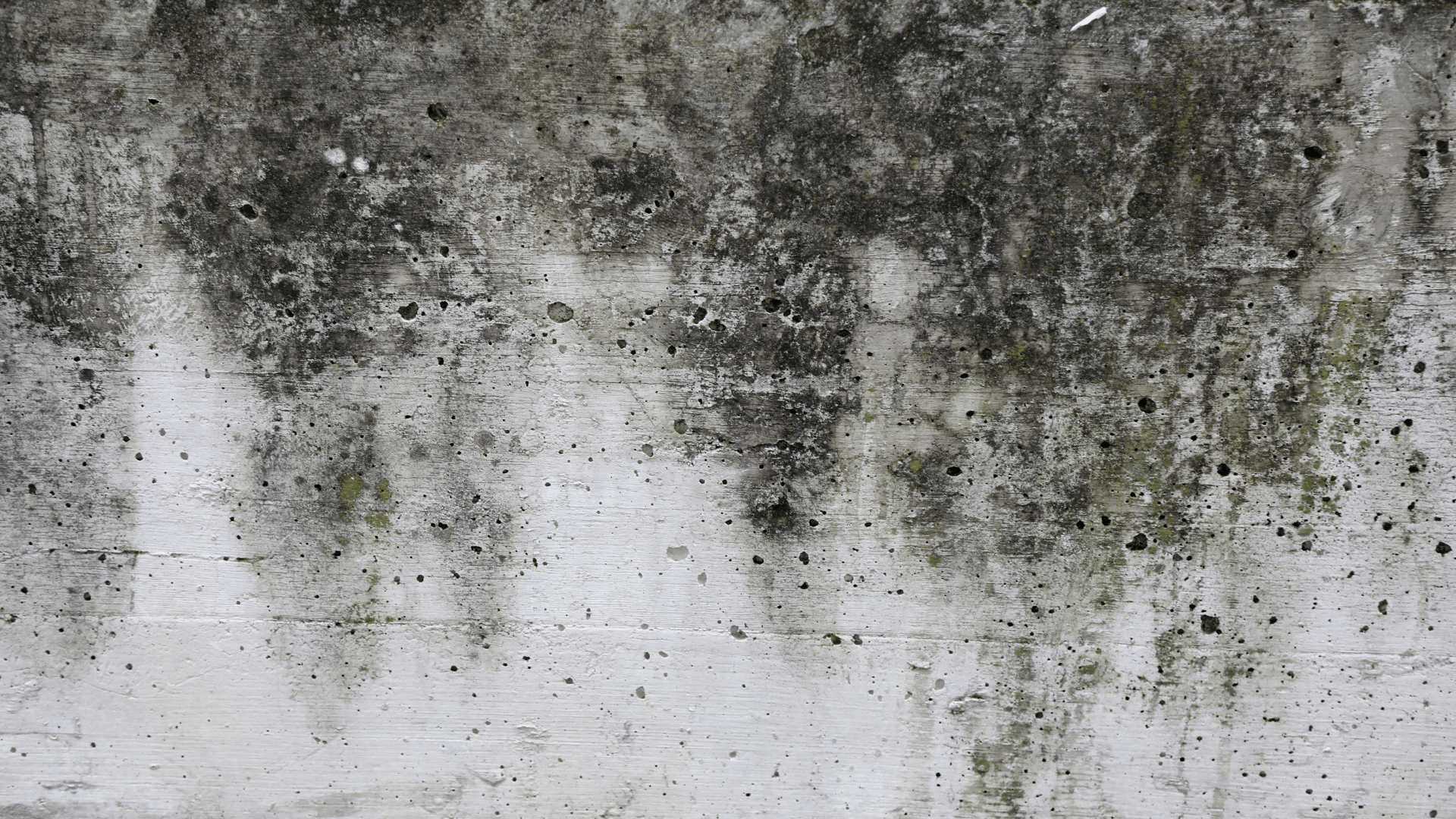What Happens During a Biohazard Cleanup? Behind the Scenes with HRS
The Critical Nature of Biohazard Cleanup
When disaster strikes in the form of a biohazard situation, most people’s first instinct is to call for help and then step away. And rightfully so—biohazard scenes contain potentially dangerous biological materials that require specialized handling. Whether it’s the aftermath of a traumatic event, an unattended death, sewage backup, or infectious disease contamination, these situations demand immediate, professional attention.
At HRS Restoration Services, our biohazard cleanup teams are the unsung heroes who arrive when others leave. They work diligently behind the scenes to restore safety, dignity, and normalcy to spaces affected by biologically hazardous materials. But what exactly happens during a biohazard cleanup? What steps do our certified technicians take to transform a contaminated area back into a safe environment?
In this behind-the-scenes look, we’ll walk you through our comprehensive biohazard remediation process—from the initial emergency call to the final restoration. Understanding this process not only highlights the complexity and importance of professional biohazard cleanup but also demonstrates why proper protocols are essential for health, safety, and emotional well-being.
Contact our biohazard response team or call our emergency line at 303-241-7849 for immediate assistance.
The First Response: Assessment and Planning
The Emergency Call
Biohazard situations typically begin with an urgent call to our 24/7 emergency response line (303-241-7849). Our dispatchers are trained to gather critical information while providing callers with immediate guidance on safety precautions until our team arrives. During this initial conversation, we:
- Determine the nature and extent of the biohazard
- Identify potential risks to occupants and property
- Dispatch the appropriate team with specialized equipment
- Provide instructions to secure the area and prevent exposure
- Coordinate with other emergency services if necessary
Response time is critical in biohazard situations. The longer biological materials remain, the greater the risk of pathogen spread, permanent damage to structures, and psychological impact on those affected. Our teams typically arrive on-site within 1-2 hours of the initial call.
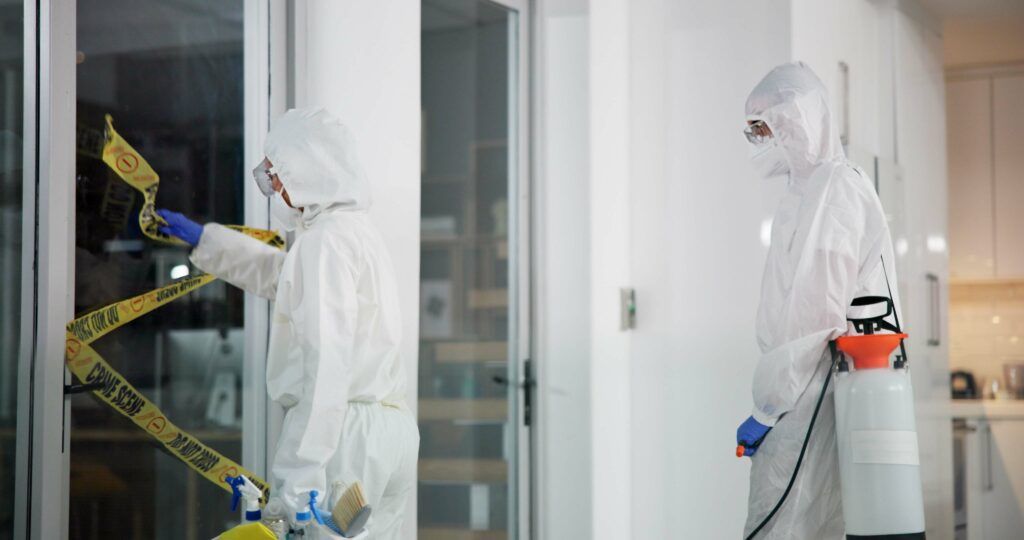
On-Scene Assessment
Upon arrival, our certified technicians conduct a thorough assessment while maintaining strict safety protocols:
- Secure the perimeter – The affected area is cordoned off to prevent unauthorized access
- Document the scene – Detailed photos and notes are taken for insurance purposes and remediation planning
- Identify contamination scope – Technicians determine the full extent of visible and potential hidden contamination
- Develop remediation strategy
– A comprehensive cleanup plan is created based on the specific biohazard type and affected materials
During this assessment phase, our team leader communicates with property owners or managers to explain the process, timeline, and answer any questions. We understand these situations are often emotionally charged, so we approach each case with compassion and clarity.
Safety First: Preparation and Protection
Personal Protective Equipment (PPE)
Before any cleanup begins, our technicians suit up in appropriate personal protective equipment. Depending on the biohazard level, this may include:
- Full-face respirators with HEPA filters
- Chemical-resistant coveralls with sealed seams
- Multiple layers of medical-grade gloves
- Protective boot covers
- Face shields or safety goggles
This extensive PPE serves two critical purposes: protecting our technicians from exposure to bloodborne pathogens and other biological hazards, and preventing cross-contamination between affected and clean areas.
Containment Setup
Creating proper containment is a crucial step that prevents the spread of contaminants to unaffected areas:
- Negative air pressure systems are installed to ensure airborne pathogens don’t escape the cleanup zone
- Physical barriers using plastic sheeting and specialized tape create sealed work areas
- Decontamination zones are established for safe entry and exit procedures
- HEPA air filtration continuously cleans the air within the containment area
- Biohazard waste stations
are set up for proper disposal of contaminated materials
This containment infrastructure may seem extensive, but it’s essential for preventing a localized biohazard from becoming a building-wide contamination issue.
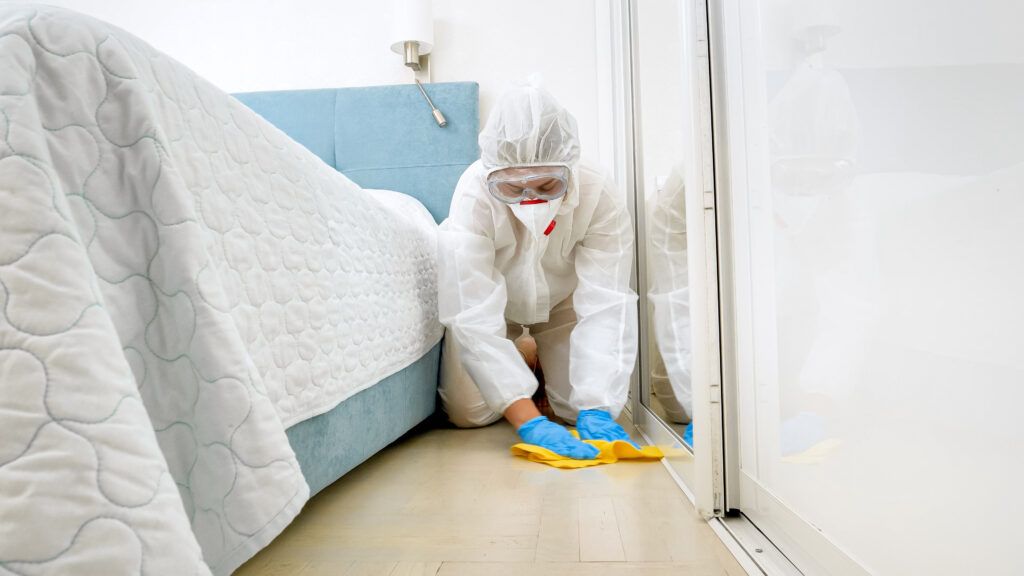
The Cleanup Process: Removal, Cleaning, and Disinfection
Removal of Contaminated Materials
Once containment is established, our technicians begin the careful process of removing contaminated materials:
- Visible biohazardous waste is collected using specialized tools and placed in approved biohazard containers
- Porous materials that cannot be effectively decontaminated (carpeting, upholstery, drywall, etc.) are removed and properly disposed of
- Personal belongings are carefully evaluated—salvageable items are set aside for specialized cleaning
- Structural elements
are assessed for integrity and removal needs
This phase requires meticulous attention to detail. Our technicians are trained to identify and address hidden contamination that may have seeped into subfloors, wall cavities, or other concealed spaces.
Multi-Stage Cleaning Protocol
After removal of contaminated materials, we implement our multi-stage cleaning protocol:
- Initial cleaning removes remaining visible contaminants
- Deep cleaning addresses semi-porous surfaces with specialized cleaners
- Enzymatic treatments break down biological materials at the molecular level
- Scrubbing and agitation ensure cleaning agents reach all surface areas
- Rinsing and neutralizing
remove cleaning agents and prepare surfaces for disinfection
Each cleaning stage uses progressively more refined techniques to ensure no biological material remains before disinfection begins.
Hospital-Grade Disinfection
The disinfection phase is perhaps the most critical for ensuring safety:
- EPA-registered disinfectants specifically rated for the particular biohazard are applied
- Proper dwell times are strictly observed to ensure complete pathogen destruction
- Multiple application methods (spraying, fogging, wiping) ensure complete coverage
- ATP testing may be conducted to verify disinfection effectiveness
- Odor elimination treatments
address any lingering biological odors
Our disinfection protocols meet or exceed OSHA, EPA, and industry standards for bloodborne pathogen remediation and infectious disease control.
![Image: Close-up of HRS technician performing detailed cleaning of a surface, showing specialized equipment and attention to detail during the remediation process]
Verification and Restoration: Ensuring Safety and Normalcy
Testing and Verification
Before we consider a biohazard cleanup complete, we conduct thorough verification procedures:
- Visual inspection under specialized lighting to detect any remaining contamination
- Surface testing using ATP meters to detect biological residue
- Air quality testing when appropriate for the specific biohazard
- Third-party verification for certain situations or when required by regulations
- Documentation
of all testing results for insurance and compliance purposes
This verification process provides peace of mind that the space is truly safe for reoccupation.
Contact our biohazard response team or call our emergency line at 303-241-7849 for immediate assistance.
Restoration Services
Once an area is certified clean and safe, our restoration team takes over:
- Structural repairs to areas where contaminated materials were removed
- Replacement of flooring, drywall, and fixtures as needed
- Painting and finishing to restore visual appeal
- Odor neutralization treatments if necessary
- Final cleaning
of the entire area
Our goal is to return the space to pre-incident condition or better, often leaving no visible evidence that a biohazard event occurred. This restoration phase is particularly important for the emotional well-being of those affected by the incident.
Beyond the Cleanup: Support and Compliance
Emotional Support and Resources
At HRS, we recognize that biohazard situations often involve emotional trauma. Our services extend beyond physical cleanup to include:
- Compassionate communication throughout the process
- Connections to grief counseling resources when appropriate
- Assistance with insurance claims documentation
- Coordination with victim services
when applicable
Our technicians are trained to work with sensitivity and respect, understanding that behind every biohazard cleanup is a human story.
Documentation and Compliance
Proper documentation is essential for legal, insurance, and regulatory purposes:
- Detailed reports of all work performed
- Photographic evidence of before, during, and after conditions
- Waste disposal manifests tracking all biohazardous materials
- Certification of completion verifying the space meets safety standards
- Insurance documentation
to support claims processing
This comprehensive documentation ensures all stakeholders have the information they need for closure, compliance, and moving forward.
Conclusion: The HRS Difference in Biohazard Remediation
When facing a biohazard situation, having a professional, certified team makes all the difference. At HRS Restoration Services, our biohazard cleanup process represents the culmination of extensive training, specialized equipment, and compassionate service delivery. We handle the situations most people never want to think about, allowing families, businesses, and communities to begin the healing process.
The hidden work of our biohazard teams transforms spaces from dangerous to safe, from traumatic to renewed. While the process is complex and demanding, the outcome is simple: a clean, safe environment where life can continue.
If you’re facing a biohazard situation or want to learn more about our emergency response services, don’t hesitate to reach out. Our teams are available 24/7 to respond to emergencies throughout Colorado. Contact our biohazard response team or call our emergency line at 303-241-7849 for immediate assistance.
Remember, in biohazard situations, professional remediation isn’t just recommended—it’s essential for health, safety, and peace of mind.
The post What Happens During a Biohazard Cleanup? Behind the Scenes with HRS appeared first on HRS Restoration.


